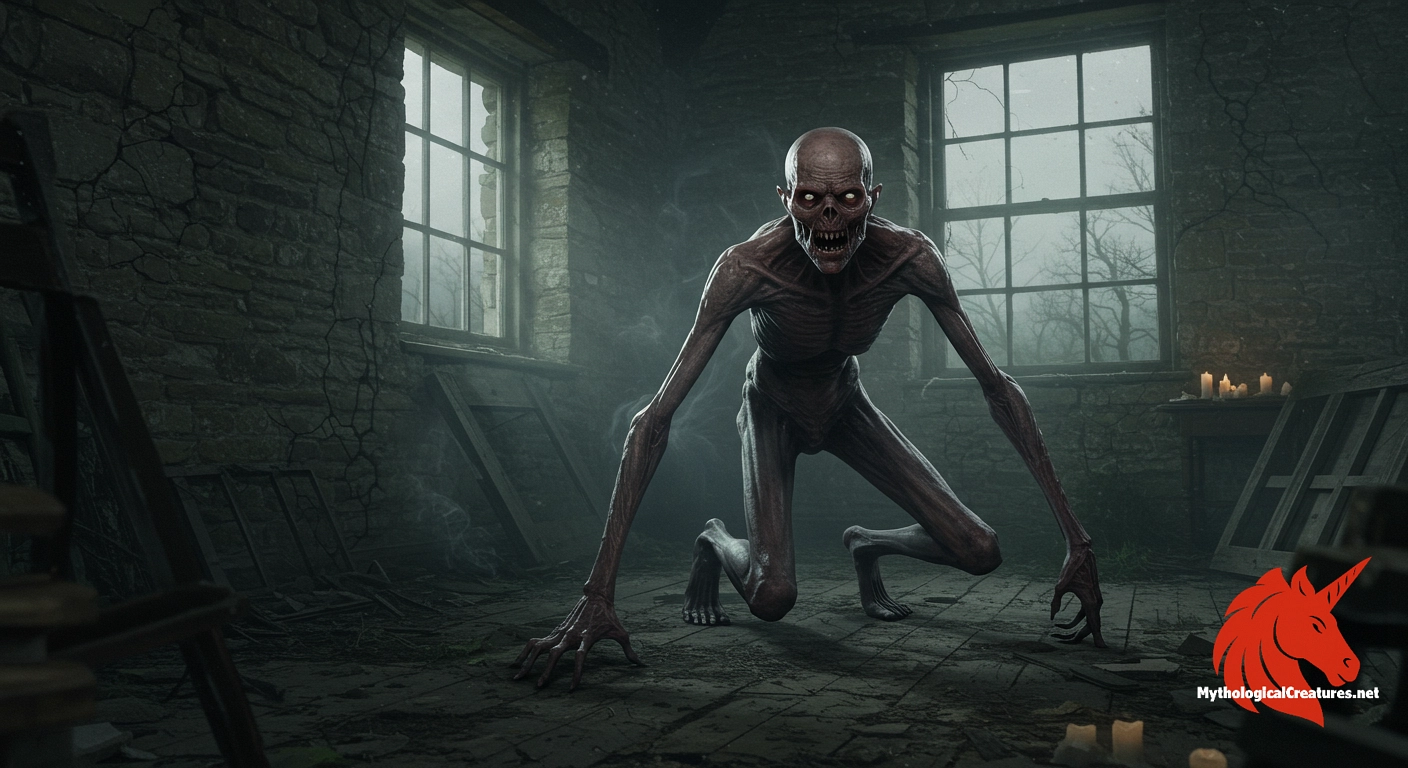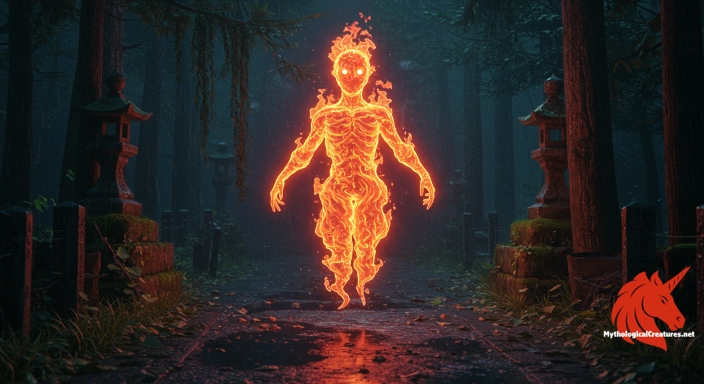Boggart: The boggart is a malevolent supernatural spirit from English folklore known for its disruptive presence in households.

Boggart
Boggart - Boggarts serve as cautionary figures in English folklore, symbolising the unpredictable and dangerous presence of local spirits.
Origins & First Encounters
The boggart is a spectral entity that has intrigued and unsettled communities in England for centuries. Emerging from deep-rooted rural traditions, it occupies the threshold between supernatural wonder and domestic dread. Its origin is often traced back to early oral histories that sought to explain mysterious phenomena occurring in both the natural world and the household. Early written references began to emerge during the Victorian era as communities tried to document these uncanny occurrences. Local storytellers imbued the creature with qualities that ranged from playful mischief to a portent of ill fortune. This ambiguity allowed the boggart to serve as both a benign guardian at times and a fearsome harbinger at others. Its presence became an influential part of folklore, reflecting the uncertainties of everyday life. Over time, it built a reputation as an elusive spirit that defied simple categorisation. The creature’s role in local myth ultimately underscores the delicate balance between comfort and fear in traditional communities. Today, the enduring legacy of the boggart continues to evoke both caution and fascination among those who encounter its myth.
Source Texts & Tale Variants
Historical texts and local dialect studies provide a colourful tapestry of accounts concerning the boggart, each contributing a distinctive facet to its legend. Early descriptions by dialectologists remarked on its quality as an undefined apparition, leaving its true nature open to interpretation. Folklorists have recorded a number of variants, some depicting the spirit as an almost solitary malevolence while others hint at a more ambiguous, liminal presence. Manuscripts from the 18th and 19th centuries reveal that the boggart was once intertwined with everyday superstition and served as an explanation for inexplicable events. Some narratives interweave the concept of a household entity with depictions of a wild, untamed spectre inhabiting remote locales. In regions such as Lancashire, detailed accounts distinguish between the so-called "house boggarts" and those associated with the natural environment. Variations in the creature’s portrayal across different texts highlight its fluid nature within local mythologies. The rich diversity of stories ensures that the boggart remains a multifaceted figure in English folklore. Each recorded variant adds depth to its mythos by reflecting the cultural and geographical context in which it was shared. The accumulated narratives not only preserve a historical record but also invite continual reinterpretation of its mysterious character.
Form & Powers
Visual depictions of the boggart are as varied as the regions from which its tales originate, often leaving its exact appearance shrouded in mystery. It is sometimes portrayed as a shadow-like figure with shifting, indistinct features that seem to blur at the edges. In certain descriptions, its presence is marked by an uncanny, clammy touch and deep, unfocused eyes that vanish as quickly as they appear. The creature is noted for its capacity to adopt different forms, at times manifesting with a more human outline and at others as a formless outline of darkness. Some accounts mention a spectral hand that intrudes into the sanctity of a sleeper’s bed, conveying a visceral sense of dread. Variability is a hallmark of its physical descriptions, suggesting that the boggart’s appearance might change based on the observer’s state of mind or the local tradition. This mutable quality enables the creature to embody both the tangible and the ethereal, thereby confounding attempts at a definitive portrayal. Subtle details such as a discoloured, shifting silhouette or the sensation of a cold presence add layers to its mystique. Each depiction reinforces the idea of the boggart as an ever-changing emblem of the unknown. Through its elusive physical characteristics, the boggart continues to terrify and astound those who dare to visualise it.
Regional Faces
The boggart’s character is notably reshaped by the distinct cultural landscapes of England, with subtle differences emerging between rural and urban settings. In northern counties, particularly in areas like Lancashire, the spirit is often associated with rugged, untamed lands and carries a weight of local identity that enhances its menace. Well-documented local accounts differentiate between household boggarts, which terrorise residents directly, and those linked to the broader geographic features of the area. In these locales, the boggart becomes a living embodiment of the local terrain, reflecting both the beauty and the peril of the countryside. The creature’s behaviour and attributes are adapted to the moody environments, realigning its role to that of either an enterprising trickster or a forewarning force. In contrast, southern localities sometimes depict the spirit with a dose of mischief that is less overtly violent, yet still unpredictable. Community narratives have allowed the boggart to acquire traits that echo other domestic spirits celebrated throughout Europe. Local adaptations ensure that its myth remains relevant by aligning with the values, fears, and traditions unique to each region. The regional variations of the boggart thus highlight its versatility as a mythic figure that is both universally mysterious and intimately local. Its varied portrayals remind us that folklore is often a mirror reflecting the unique character of the communities that nurture it.
Cultural Parallels
The enigmatic nature of the boggart finds an intriguing resonance with supernatural entities across various cultural landscapes, presenting rich opportunities for comparative analysis. Its role as a household intruder has similarities with the poltergeist phenomena documented in other parts of Europe, where unseen forces disrupt the everyday order. In a manner akin to the Irish bogle, the boggart is often portrayed as both mischievous and menacing, embodying the paradox of danger interlinked with familiarity. Similar to the broader category of hobgoblins, it blurs the domain between a playful spirit and a dangerous menace, depending on the narrative in which it appears. This duality is a recurring motif in myth, where ambiguity is the norm rather than the exception. The boggart’s capricious nature invites comparisons with various trickster archetypes found in Northern and Central European traditions. Such cross-cultural parallels shed light on how different societies personify the inexplicable to make sense of their world. Its mutable character, which allows it to oscillate between benign and hostile, mirrors common themes in supernatural folklore everywhere. These cultural intersections reveal that despite regional disparities, many communities have long sought to make peace with forces that defy simple explanation. Through these shared mythic threads, the boggart emerges as a vital link between diverse traditions of the uncanny.
Legacy & Modern Evolution
Over the centuries, the perception of the boggart has undergone a significant transformation, evolving from a feared spectral attacker to a symbol rich with metaphorical meaning. Its early role was deeply intertwined with local superstition, serving as a tangible explanation for mysterious events in an era before scientific rationality predominated. As society shifted, so too did the creature’s representation, transitioning from a literal presence in dark corners of the home to a symbol in literature and art that explored the nuances of the unknown. Modern reinterpretations have expanded its character, rendering it a metaphor for the capricious forces of chance and the unpredictability of everyday life. The boggart now appears in a range of creative media, from horror novels and films to stage productions and local folklore festivals, where it is celebrated as a fixture of cultural heritage. Contemporary artists often exploit its ambiguous morality, drawing on its storied past to reflect modern societal anxieties about control and identity. This evolution illustrates the fluid nature of myth, as the boggart adapts to new cultural contexts while retaining echoes of its historical roots. Its enduring presence in popular culture highlights humanity’s perpetual fascination with forces that lie beyond the ordinary. Even today, the creature continues to inspire both creative reinterpretation and scholarly debate. The legacy of the boggart serves as a reminder of the enduring power of folklore in shaping our understanding of the mysterious dimensions of human experience.
Interesting Fact
An intriguing aspect of boggarts is the paradox that, contrary to many supernatural traditions where naming grants power over a being, giving a boggart a name is said to render it uncontrollable and even more dangerous.
Mythology-aligned partners
Showcase your myth-friendly brand here
Run a store, studio, or platform that lives in the world of myth and folklore? A curated sponsor panel on these pages may fit.
Explore partnership optionsQuick Creature Info
Origin:
Features:
Our Mythic Legendary Rating:

Also Sometimes Known As:
Habitat:
Supernatural Powers:
Physical Attributes:
Abilities:
Behavior:
Weaknesses:
Lore:
Related Creatures, Tales or Lore
- HHobgoblin
- PPoltergeist
- BBrownie
References
Discover Another Mythical Legend You May Not Have Heard Of?
Uncover the mysteries of ancient folklore and expand your knowledge of legendary beings from cultures around the world.
Dare to Meet the Akurojin-no-hi....
Curated by the Mythological Creatures Team
Series editor: Mythological Creatures Directory
Primary desk: Northern & European Folklore Desk
(rev. November 2025)
